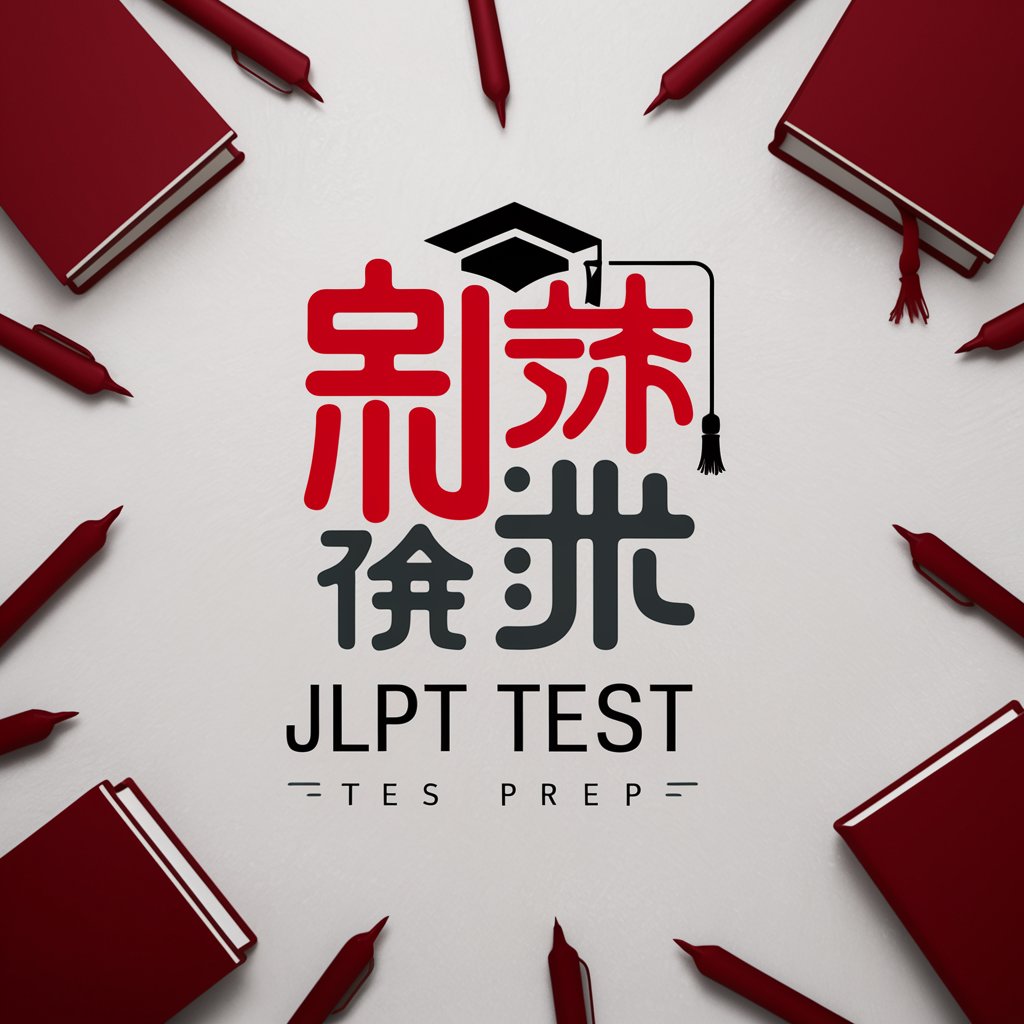JLPT Test Prep - JLPT Practice and Feedback

Welcome to JLPT Test Prep! Ready to start practicing for your JLPT exam?
AI-powered JLPT Mastery
Provide a detailed explanation of the differences between JLPT N3 and N4 vocabulary requirements.
What are some effective study strategies for preparing for the JLPT N2 reading section?
Can you give me a practice question for JLPT N5 grammar with an explanation?
Explain the key points to focus on when studying kanji for the JLPT N1 level.
Get Embed Code
Introduction to JLPT Test Prep
JLPT Test Prep is designed as a specialized tool to assist learners in preparing for the Japanese Language Proficiency Test (JLPT), which spans levels N1 to N5. Its primary purpose is to simulate the test environment and provide practice questions mirroring the actual exam's format, covering vocabulary, grammar, reading, and listening comprehension. The system offers immediate feedback on answers, including correctness and detailed explanations, particularly for more challenging questions. This design aims to facilitate targeted learning and improvement, allowing users to identify and focus on areas needing reinforcement. For example, after completing a vocabulary question, a user might receive an explanation that not only confirms the answer but also delves into word usage and nuances, similar to a mini-lesson tailored to their response. Powered by ChatGPT-4o。

Main Functions of JLPT Test Prep
Simulated Practice Tests
Example
Offering a full suite of questions across all JLPT levels, mirroring the actual exam format.
Scenario
A user preparing for the N3 level can complete a practice test consisting of sections that simulate the real N3 exam, receiving feedback and explanations for each question.
Detailed Feedback and Explanations
Example
Providing in-depth explanations for answers, including why an answer is correct or incorrect.
Scenario
After a user selects an answer for a grammar question, the system explains the grammatical principle involved, offers examples of correct usage, and highlights common mistakes.
Progress Tracking
Example
Allowing users to monitor their improvement over time through performance analytics.
Scenario
A user can view their progress in various areas, such as vocabulary or grammar, to see how their scores improve with practice, helping to identify strengths and areas for further study.
Customizable Practice Sets
Example
Enabling users to focus on specific sections or difficulty levels according to their needs.
Scenario
If a user struggles with Kanji, they can create a practice set focusing solely on Kanji, choosing questions from levels N5 to N1, depending on their proficiency.
Resource Recommendations
Example
Suggesting additional study materials or resources based on user performance and needs.
Scenario
Based on a user's incorrect answers in reading comprehension, JLPT Test Prep might recommend specific reading materials or exercises to improve in that area.
Ideal Users of JLPT Test Prep
JLPT Exam Candidates
Individuals planning to take the JLPT at any level, from N5 (beginner) to N1 (advanced), who seek to familiarize themselves with the exam format and question types, improve their proficiency through practice, and assess their readiness for the actual test.
Japanese Language Learners
Students and self-learners of Japanese who, regardless of their intent to take the JLPT, wish to systematically study and improve their language skills across vocabulary, grammar, reading, and listening comprehension.
Language Teachers and Tutors
Educators seeking resources to support their curriculum, provide additional practice for their students, or assess student progress with materials that reflect the standards of the JLPT.
Professionals and Academics
Individuals requiring certification of their Japanese proficiency for career advancement, academic purposes, or relocation to Japan, who need a structured and efficient way to prepare for the highest proficiency levels.

How to Use JLPT Test Prep
1. Start Your Trial
Visit yeschat.ai to begin a free trial without the need for login or subscribing to ChatGPT Plus.
2. Select Your Level
Choose the JLPT level you're preparing for (N1 to N5) to tailor the questions according to your proficiency.
3. Engage with Practice Questions
Answer a set of five questions that cover vocabulary, grammar, reading, and listening comprehension, mirroring the actual exam format.
4. Review Feedback
After each question, receive immediate feedback on your answers, including explanations and correct answer rationales.
5. Continuous Learning
Utilize the option to attempt additional sets of questions, enabling continuous improvement and learning.
Try other advanced and practical GPTs
JourneyCraft
Craft Your Journey with AI

Retail Placement Pro
Empowering Retail Success with AI

GA4 Setup helper
Simplifying GA4 Setup with AI-Powered Guidance

Planes In The Sky meaning?
Decoding the Skies with AI

Anime Otaku
Immerse in Anime Conversations, Create Art

Gambling Sites
Discover top online gambling with AI

Spiritual Life Mentor
AI-powered spiritual life mentorship.

Farsi Teacher
Learn Farsi with AI, effortlessly.

Linux Terminal
Empower your command line skills with AI

Ipswich Town F.C.
Empower your football knowledge with AI-driven insights on Ipswich Town F.C.

The List
Unveiling Truth with AI Power

Wisdom of Zhuangzi - 莊子
Unveiling Ancient Wisdom for Modern Minds

Frequently Asked Questions about JLPT Test Prep
What levels of the JLPT does this tool support?
JLPT Test Prep supports all levels of the Japanese Language Proficiency Test, from N1 (the most advanced) to N5 (the beginner level).
Can I receive explanations for the answers?
Yes, after each question, you will receive detailed feedback including the correct answer, an explanation, and why other options were incorrect.
Is it possible to focus on specific areas, like kanji or grammar?
While the tool provides a comprehensive set of questions covering all test areas, focusing on specific sections like kanji or grammar through repeated practice sets can help target those areas.
How does this tool help with listening comprehension?
Listening comprehension is addressed through questions that simulate the listening section of the JLPT, including various dialogues and narratives to test understanding.
Can I track my progress over time?
While direct tracking isn't built-in, the feedback provided allows you to self-assess and monitor your improvement through consistent practice and review.
